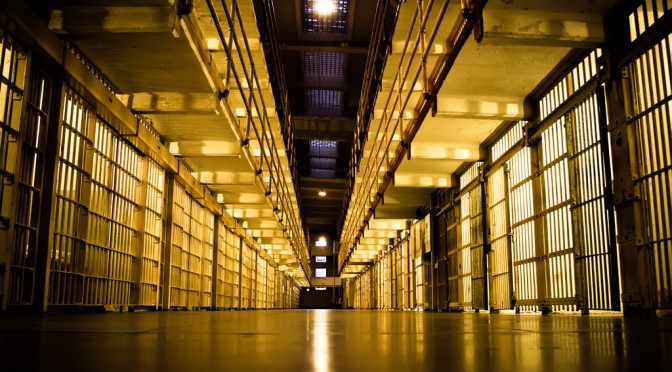By Ken Francis
It’s October, and a group of students are lined up against a fence outside their school, bundled up against the unexpected frost. Hoodies are pulled taut, hands are gloved and beanies with bright pom-poms are pulled low. These students, aged 10 through 15, are waiting to shake their principal’s hand before they enter the school building. Afterward, they’ll bound into the building and bounce against each other like so many marbles in a bowl. They are disorderly, they are playful, they are children. Or are they?
How much will any of them mature in the next year? At 16, could they appropriately be considered adults? And, if one of them makes a mistake and commits a crime, should s/he be prosecuted as an adult?
The criminal justice system in New York State would say yes. 16 and 17 year olds are prosecuted as adults in New York state — a distinction shared only by North Carolina. In the present system, a 16 or 17 year old can commit a crime of any severity and, if the charge is not dismissed, or if they are met with a harsh judge, they can find themselves faced with years in prison alongside hardened criminals, who may likewise have also been youth offenders in their adolescence. Studies show that prosecuting youth in this way leads them exactly back to where they’ve spent their late teens: in the criminal justice system. A young person in late adolescence sucked into the abyss of harsh prosecution has an extremely hard time making it out.
The prison system in America is almost exclusively punitive, magnifying pre-existing problems with which young inmates enter the system, and failing — or not even attempting — to promote rehabilitation. In prison, young people can be intimidated, abused and sexually assaulted, by both their fellow prisoners and guards, on a daily basis. This fosters an environment of neglect and punishment.
Young people, like adults, have a hard time staving off depression after years of experience dealing with and managing emotionally and physically traumatic events. Thus, those that do survive the prison system have diminished opportunities to emerge from their pasts unscathed. The lack of opportunity and lack of social and emotional support — which, alternatively, the juvenile system might provide — can lead to a reversion to crime, thus perpetuating the cyclical trend of repeat offending, especially among youth of color. Moreover, their records cannot be expunged or sealed, making their criminal histories open to potential employers to view.
A Political History
The widespread fear of the adolescent criminal stems from the very unique case of Willie Bosket (a Harlemite), who, at the age of 15, murdered two men and shot a third on the New York City subway. Governor Hugh Carey, after reading a sensational New York Daily News article on Mr. Bosket (and who was recently called out at being soft on crime), spearheaded the Juvenile Offender Act of 1978. This campaign made it possible for Mr. Carey to be re-elected — and for hundreds of thousands of youth to be filtered through the adult prison system for the next 36 years.
Ironically, the result of this harsh prosecution is more crime and more criminals. By not fostering the best and the possible-best versions of our youth, the system encourages them to emulate the very worst parts of American “bad boy/ bad girl” culture.
The Need for Reform
Raising the age of criminal culpability would establish a starting point for thinking about lifelong criminality and how paths can be diverted given the right supportive signposts. Counselors, experts, educators, social activists: these are the individuals that can stop the gap on the flow of youth criminals into prison and society. The most recent attempts by Governor Cuomo to “raise the age” have been backed by advocates that echo these views.
The youth offender is very vulnerable. According to experts, his/her 16- or 17-year-old mind is not fully developed. Youth are very susceptible to making the wrong choices, and without intervention, persistently so. Tie the human factor in with the legal entanglements of the criminal justice system and disasters happen.
One such disaster led to the doom of Kalief Browder, who spent three years on Rikers Island awaiting trial. Mr. Browder, whose family could not afford bail, entered the prison complex when he was only 16. Accused of stealing a backpack, he was sent to Rikers Island, where he was held in solitary confinement for two years, beaten by guards, and attacked by a group of inmates. After 36 months of confinement, Mr. Browder’s case was dismissed. While in prison, he attempted suicide on a number of occasions. Two years after his release in 2013, he committed suicide at his family’s home in the Bronx.
Advocates for the campaign to Raise the Age are hoping that New York State can go from being at the bottom of this very important human rights issue to being an example that other states can emulate. These entities include the Correctional Association of New York (known as CA), Angelo R. Pinto (campaign manager for the Juvenile Justice Project) and 60 statewide and national organizations that include social workers, children’s advocates, faith-based organizations, and international human rights groups.
Unfortunately, the latest turn in this story is that the lawmakers in Albany have failed to agree on raising the age of criminal culpability to 18. This, despite advocacy by Governor Cuomo, who prioritized this issue in his annual State of the Address; the Black, Puerto Rican, Hispanic and Asian Caucus, which named Raise the Age as one of its goals; and Assemblyman Joseph Lentol (D-Williamsburg), and Sen. Velamanette Montgomery (D-Brooklyn), who sponsored the details of the proposed legislation in A.02774/S.01019. In the same instance, Governor Cuomo failed to put in a place a solid and fixed review process for when members of law enforcement kill members of the public. In the present state of things, not only are young people liable to be arrested and thrown into the mainstream prison system, but if they are brutally killed by police officers, their deaths go unheralded due to lack of oversight.
The Movement for Black Lives
It is little wonder that the Black Lives Matter (BLM) movement has become closely related to the issue of raising the age. Since young men of color are disproportionately detained and jailed in New York State, BLM has a lot of examples with which to substantiate their demands for oversight and disciplinary action, which includes criminal prosecution for members of law enforcement that abuse power.
The BLM movement’s guiding principles state that, “Black lives are systematically and intentionally targeted for demise.” Webster defines the word demise as an intransitive verb “1: DIE, DECEASE.” Young men of color die via suicide, beatings, and assault in adult prisons. Their futures are deceased when they are locked up without access to services that can serve to address the social and emotional issues characteristic of all adolescence. For a 16 or 17 year old, being placed in an adult prison leaves chance for little else but demise. In contrast, 16 and 17 year olds that commit criminal acts must be given the opportunity to reform, to diverge, to escape a desolate fate, to survive, and, hopefully, to thrive.
 Born in the republic of Trinidad and Tobago, Ken Francis has been a New Yorker for 14 years. Having received a Bachelor of Arts in Print Journalism from Brooklyn College in 2008, he now works for a nonprofit charter-school network based in Harlem. Ken is presently pursuing an Advanced Certificate in Public Administration at the Murphy Institute.
Born in the republic of Trinidad and Tobago, Ken Francis has been a New Yorker for 14 years. Having received a Bachelor of Arts in Print Journalism from Brooklyn College in 2008, he now works for a nonprofit charter-school network based in Harlem. Ken is presently pursuing an Advanced Certificate in Public Administration at the Murphy Institute.



